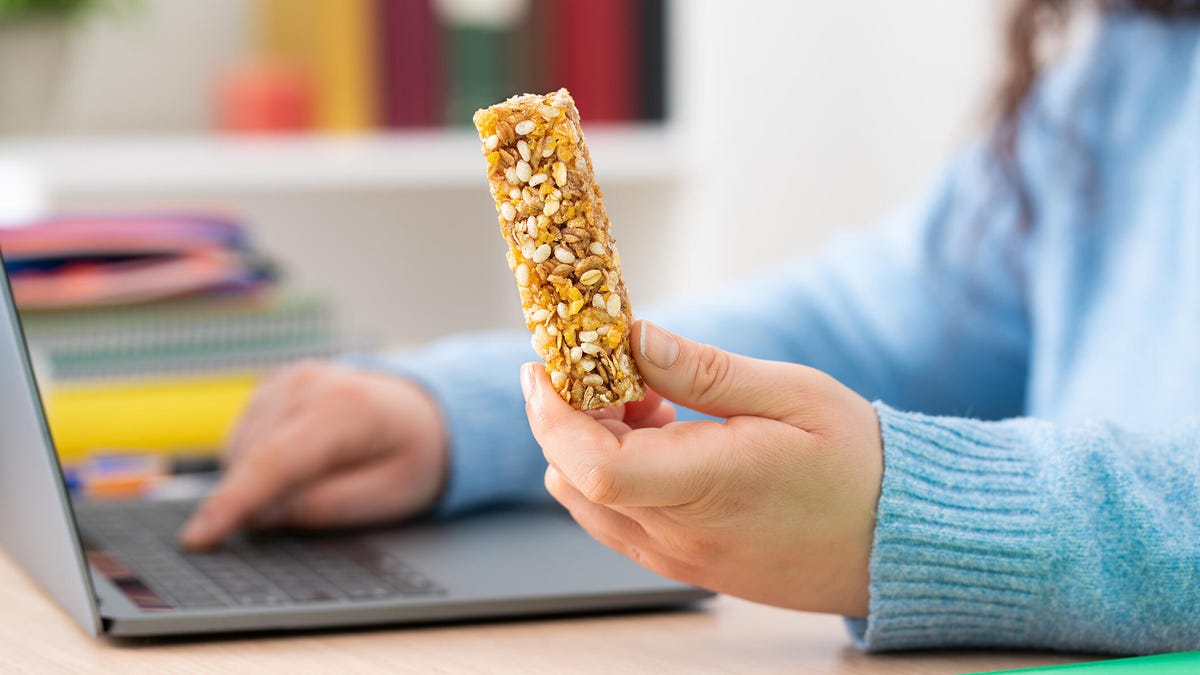In recent years, many individuals have prioritized their protein intake, but an essential dietary component is often overlooked: fiber. A 2017 report from the Food and Fiber Summit revealed that nearly 95% of both adults and children in the United States fail to meet their daily fiber needs.
Eliza Whitaker, a founder and registered dietitian at Nourished Nutrition and Fitness, points out that “Even though fibermaxxing is a hot nutrition trend right now, its basis is ensuring that people eat more fiber,” highlighting that the typical American diet is significantly deficient in this crucial carbohydrate.
In response to this trend, meal delivery services are now launching specialized plans aimed at increasing fiber consumption. For instance, Purple Carrot, recognized as CNET’s top choice for high-protein vegan meal delivery, recently introduced a high-fiber meal option.
So, what exactly is fibermaxxing? This social media-inspired trend urges individuals to boost their daily fiber intake through nutritious sources such as flaxseeds, beans, nuts, and fruits. Jessica McAllister, owner and lead dietitian at Dietitian Approved Nutrition, LLC, explains that the primary objective is to enhance digestive health, induce a sense of fullness, and support weight loss.
Despite the benefits, it’s key to adhere to the recommended fiber intake. Whitaker notes that adults should aim for between 25 and 38 grams a day, depending on their age and sex. The importance of fiber cannot be overstated; according to the Cancer Research Institute, there has been a troubling rise in colorectal cancer (CRC) among younger adults. This form of cancer is the third leading cause of cancer-related deaths for both men and women, with low fiber intake being a significant risk factor.
Is Fibermaxxing Safe for Everyone?
For generally healthy individuals, dietitian Maya Feller, founder of Maya Feller Nutrition in Brooklyn, recommends gradually increasing fiber consumption to meet the daily guideline. On the other hand, exceeding these amounts can lead to gastrointestinal discomfort, particularly for those with specific bowel conditions. “For those with certain bowel diseases, it’s not a great idea,” Feller advises, noting those with irritable bowel syndrome, Crohn’s disease, or diverticulitis should approach fibermaxxing with caution.
McAllister emphasizes the importance of increasing fiber intake slowly, as a sudden change can lead to bloating, gas, cramping, and other digestive issues. She suggests incorporating whole food sources of fiber and drinking ample water to facilitate digestion.
Whitaker underscores the advantages for adults who are not consuming enough fiber, stating that an increase can enhance gut health, improve digestion, lower LDL cholesterol, better manage blood sugar levels, decrease chronic disease risk, and promote satiety.
Individuals focused on heart health, gut well-being, or weight management may particularly benefit from incorporating more fiber into their diet. Notable fiber-rich foods include chia seeds, oats, quinoa, and lentils.
However, McAllister warns that some people should steer clear of fibermaxxing entirely or consult a healthcare provider before starting, particularly those with conditions like irritable bowel syndrome, small intestinal bacterial overgrowth, diverticulitis, and other gastrointestinal disorders. Whitaker adds that individuals with inflammatory bowel diseases or gastroparesis should also be cautious. Feller mentions that those with a history of eating disorders should avoid tracking fiber intake closely as it can provoke unhealthy behaviors.
The Potential for Weight Loss
Increasing fiber can promote a feeling of fullness, which may assist with weight loss, according to McAllister. However, she cautions that weight loss also necessitates a calorie deficit, making mindful eating essential. Feller adds that overconsumption of fiber as a weight loss strategy is ill-advised since excessive intake can lead to frequent bowel movements, malabsorption, and potentially malnutrition.
Benefits of a High-Fiber Diet
Feller and McAllister concur on numerous benefits associated with high-fiber diets, including:
– Lowering LDL cholesterol by aiding its excretion through stool
– Maintaining stable blood sugar levels
– Acting as a prebiotic that fosters beneficial gut bacteria
– Reducing inflammation and possibly lowering the risk of inflammatory chronic conditions
– Regulating bowel movements and lowering the risk of chronic diseases such as colorectal cancer, Type 2 diabetes, and heart disease
Understanding Fiber
Unlike other carbohydrates that convert into sugar, fiber remains undigested, playing an essential role in gut health. Fiber can be categorized into two types: soluble and insoluble.
*Soluble Fiber* dissolves in water, forming a gel-like substance that can aid in lowering blood sugar levels and cholesterol, commonly found in foods like oats, apples, carrots, and peas.
*Insoluble Fiber* includes the rough parts of plants that help bulk up stool and promote regular bowel movements. Sources include celery, apple skin, and whole grains.
Daily Fiber Intake Recommendations
According to the USDA’s Dietary Guidelines for 2020-2025, women aged 19-30 should aim for 28 grams of fiber daily, while those aged 31-50 should target 25 grams, and women aged 51 and older need 22 grams. For men, the recommendations are 34 grams for ages 19-30, 31 grams for ages 31-50, and 28 grams for those over 51.
For context, half a cup of cooked lentils contains about 7.8 grams of fiber, while a medium apple provides approximately 4.8 grams, and half a cup of whole grain cereal offers 7.5 grams.
Certain individuals, like those with chronic constipation, high cholesterol, and Type 2 diabetes, may have higher fiber requirements. Pregnant or breastfeeding individuals might also need to increase their fiber intake. It’s crucial to stay within recommended limits, as exceeding them can lead to issues such as diarrhea and nutrient loss.
Best Sources of Fiber
For those looking to boost their fiber intake, Whitaker advises focusing on a variety of whole food sources. Suggested options include:
– Chia seeds
– Flaxseeds
– Oats
– Chickpeas
– Lentils
– Quinoa
– Brown rice
– Nuts
– Fruit
– Beans
– Prunes
– Fonio
– Cabbage
– Broccoli
Making these dietary changes can add between 5 to 15 grams of fiber per meal, helping individuals hit their daily recommended targets of 25 to 38 grams.
Ultimately, fibermaxxing is a straightforward reminder to ensure adequate fiber consumption in your diet, facilitating a balanced and nutritious eating plan. So embrace the idea of incorporating more fiber, perhaps with a meal-prepped bean salad, to enhance your overall health.






